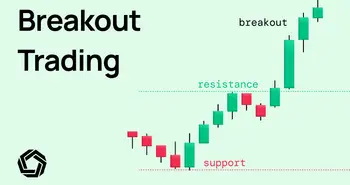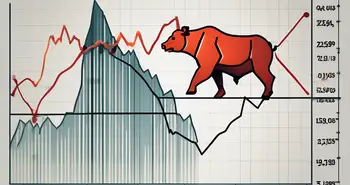Indices Trading: How to Get Started
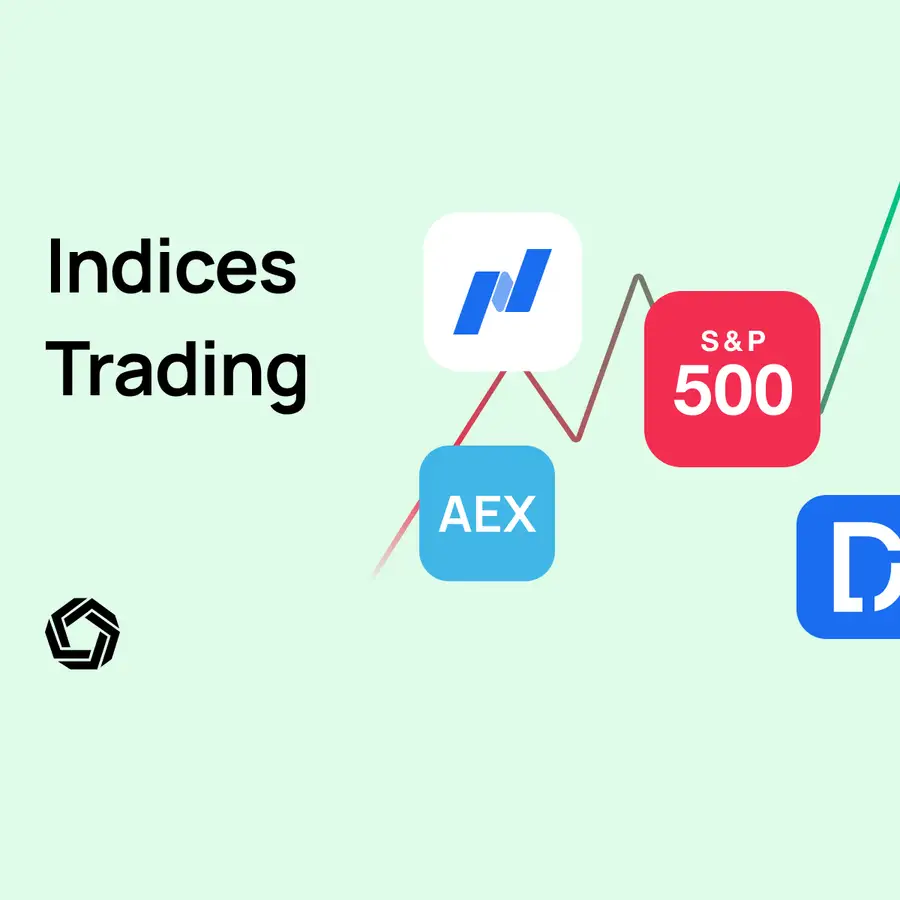
Indices trading emerges as a method of steering a course through tricky waters guided by collective insight. When you invest in an index, you're buying a few stocks that together give you a snapshot of how the whole market is doing. This aligns with the sentiments of Benjamin Graham, known for his value investing philosophy, who espoused the notion that “A low-cost index fund is the most sensible equity investment for the great majority of investors.”
Venture Capitalists, often associated with embracing elevated risk, also advocate a prudent strategy. For example, Marc Andreessen, one of the most famous VCs on the planet, said that if he got $100K, he would simply put it in the S&P 500. His advice — “Don't get fancy”. This advice about sticking to basics like the S&P 500 index is popular with regular folks and big pools of money like pension funds and college endowments. Notable anecdotes even jest at the simplicity of this approach, as evident in the humorous title “What Does Nevada’s $35 Billion Fund Manager Do All Day? Nothing,” a commentary on funds leaning heavily on index allocation, a seemingly uncomplicated practice.
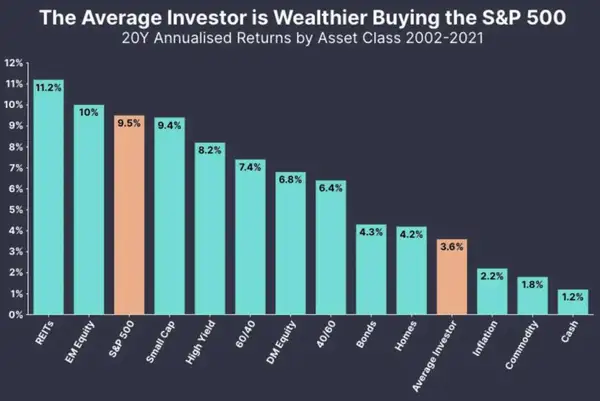
The stories of money managers who try to beat the market are well-known but often fail to consistently do better than the index. Research shows this is a problem for regular people and professional investors. The solution seems to be simple: go with index investing. Instead of spending a lot of time picking individual stocks, it's easier and often better to just go with an index fund. In a world where things can get complicated fast, sticking with index funds is like having a reliable compass that helps you navigate the ups and downs of investing.
What Are Market Indices?
Market indices are like snapshots of the stock market, capturing the performance of a group of companies. When we talk about indexing, we mean buying all the companies in a market index, like the well-known Standard & Poor's 500 Index (S&P 500), in a way that matches their importance in the index. This approach is about holding these companies without actively trading them. Surprisingly, index fund managers might not have looked at the financial reports of the companies they invest in and might not even know what these companies do.
Examples of Major Global Indices
S&P 500: This index lists 500 big companies from the U.S. It's an excellent way to understand how the U.S. stock market is doing.
NASDAQ: Known for technology companies, this index includes businesses like Apple and Amazon. It's a bit like a tech showcase.
FTSE 100: This index is from the UK and lists the top 100 companies on the London Stock Exchange. It reflects how the UK market is performing.
How Indices Are Calculated and Maintained:
Calculating an index is like finding the average of the companies' performances. Imagine you have a group of friends, and you want to know how happy they are on average. You'd add up their happiness levels and divide by the number of friends. Similarly, an index calculates the average of the companies' stock prices. If some companies do better, they influence the index more. To keep the index fair, it's adjusted over time as companies change or their values shift. Here are the steps on how the S&P 500 index is managed:
1. Company Selection: The index comprises 500 large companies from various U.S. industries.
2. Market Capitalization Weighting: Each company is weighted according to its market value, with larger companies exerting more influence on the index.
3. Index Value Computation: A formula that factors in both stock prices and market capitalizations is used to determine the index value.
4. Regular Updates: The index is adjusted periodically, either on a quarterly basis or in response to specific corporate events like stock splits or bankruptcies.
5. Company Replacement: Companies that undergo significant changes or become ineligible are replaced to maintain the index's integrity.
6. Total Return Version: A version of the index exists that includes the reinvestment of dividends, offering a more complete view of performance.
The S&P 500 index is maintained through a structured process that involves selecting companies, weighing them according to market value, and employing a calculation formula. It undergoes regular updates and adjustments to remain aligned with the current market conditions, and a total return version incorporates dividend reinvestment.
The Appeal of Indexing
Over time, many big investors have struggled to beat the market. Since all investors together own the whole market, it's appealing to match it. Indexing adds more advantages, like very low costs since there's hardly any buying and selling, and low management fees because it doesn't require much decision-making.
Another reason for the rise of indexing is the idea of an “efficient-market hypothesis.” This theory suggests that all information about stocks spreads quickly and affects their prices immediately. So, trying to do better than the market might not work. This theory also implies that doing extra research might not add much value. In simple terms, it's like saying one stock is as good as any other, so why not have a mix of many?
Counterarguments for Index Investing
Critics of indexing often center their arguments around the resounding success of buying the S&P 500, an index that has demonstrated consistent growth over its existence. While this advice may hold true for the US market, it doesn't necessarily translate well to emerging or developed markets like Japan and the UK. Without delving deeply into the specifics of securities (ETFs) and passive investing, let's keep this concise.
Some contend that the idea of the market being unbeatable has led many investors to settle for average returns by simply investing in indexes. For those with the dedication, time, and resources, aiming to surpass the market shouldn't be considered settling; attempting to outperform the market requires a certain degree of boldness, which is perfectly acceptable.
Others argue that indexing might become counterproductive if too many investors adopt it. While indexing relies on efficient markets, if an increasing percentage of all investors go the indexing route, the markets could become less efficient because fewer individuals would engage in research and fundamental analysis. In an extreme scenario where everyone indexes, stock prices would barely fluctuate relative to each other, as no active forces would move them.
Notably, Seth Klarman expressed scepticism about indexing in his renowned book “Margin of Safety.” He believed indexing to be a passing trend and predicted that the prices of securities included in popular indexes would likely decline compared to those excluded. He pointed out that the success of indexing reinforces the index's performance, creating a feedback loop. However, this trend has yet to materialize, and indexing continues to prove a winning strategy. While critics have raised valid concerns, the strategy of investing in indexes has maintained its effectiveness in the current investment landscape.
How to Trade Indices
- Go to Morpher and Sign-Up (takes 2 mins)

- Click on “Indices” on the left side. You will see 4 Indices that you can trade. The Amsterdam Exchange Index, the Dow Jones Industrial Average, the NASDAQ-100, S&P500 Index

- Click on one of the Indices to get to the trading page. Here, you can simply click on Buy or Sell on the right-hand side and voila – You have done your first trade!
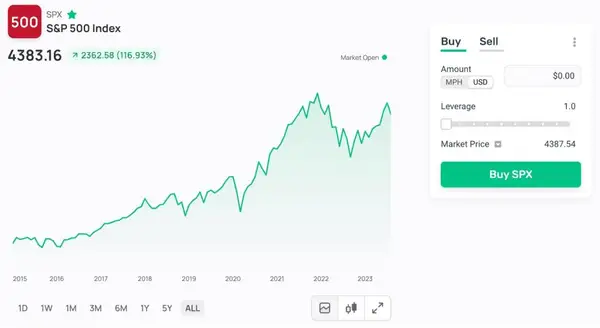
Why Trade Indices With Morpher?
First and foremost, Morpher is often cited as a user-friendly trading platform that simplifies the trading process, making it particularly suitable for individuals seeking a straightforward trading experience or for passive investors. It basically already encompasses the simplistic idea of Index Investing. As you saw above, in only 3 steps, you are already set and invested in an Index, but there are many other points on why index investing on Morpher is better.
Unique to Morpher is the ability to either “Long” or “Short” any index directly, a feature not commonly available on other platforms where acquiring specific put options is typically required. For example, if one intends to emulate the trading strategies of individuals like Michael Burry, who recently took a $1.6 billion short position against the S&P 500 and Nasdaq indexes, Morpher eliminates the need to search for exact ETF contracts; a simple “Sell” command accomplishes the task.
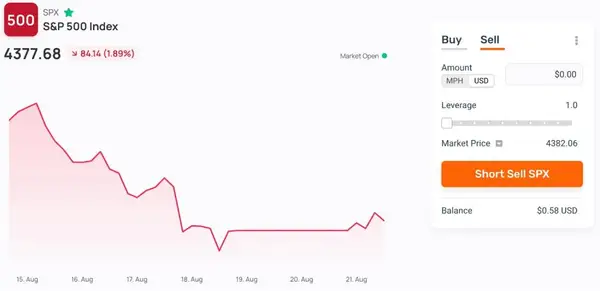
Additionally, Morpher provides unrestricted leverage options. This functionality is particularly relevant for those interested in leveraging ETFs such as the ProShares Ultra S&P500 (SPXU), which aims to yield twice the S&P 500's daily return. Leveraged ETFs often perform well during bull markets, and on Morpher, the ability to specify desired leverage levels offers a potentially advantageous trading strategy, especially in volatile markets.
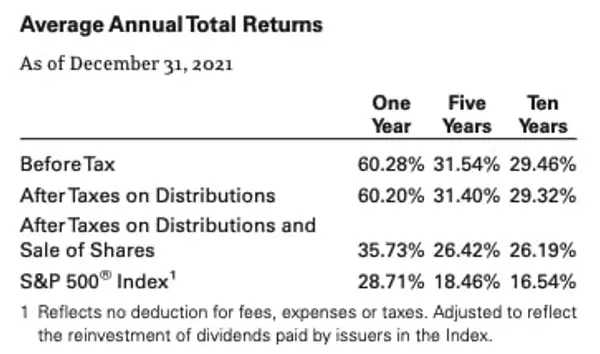
Beyond stock indices like the S&P 500, Morpher provides access to a diverse array of over 1000+ assets. These include not only stock indices but will also introduce cryptocurrency indices and commodity indices. Moreover, the platform plans to introduce trading for specialized sub-market indices, such as AI-based or biotech indices, as well as a Luxury index that would amalgamate rare sneakers, blue-chip NFT art, and luxury watches—a diversified asset portfolio not offered by most other platforms.
Lastly, Morpher eliminates trading fees, which can be especially beneficial for day traders. Often, the low-percentage fluctuations in indices like the S&P 500 may not warrant trading on platforms that impose fees. On Morpher, the absence of such fees facilitates leveraged trading on a wide range of indices, potentially enhancing profitability.
What Are the Best Strategies for Trading Indices?
Successful index trading can often hinge on the strategy employed, and there are several methods that traders might consider. These methods would mainly differ in two parts: the “type of analysis” and the “timeframe”. For the type of analysis, we would differentiate between Technical and Fundamental Analysis. For the timeframe, this would be Day-Trading (Short Timeframe) vs. Holding (Long Timeframe).
For the type of analysis, meaning how you would decide when to buy and sell, you can go with technical analysis, or with fundamental analysis. Naturally, many traders combine both together, giving you a more holistic view of the market.
Technical Analysis
Technical analysis is a method used in financial markets to forecast future price movements based on historical data. This approach relies on chart patterns, indicators, and other statistical measures to identify trends and potential inflexion points.
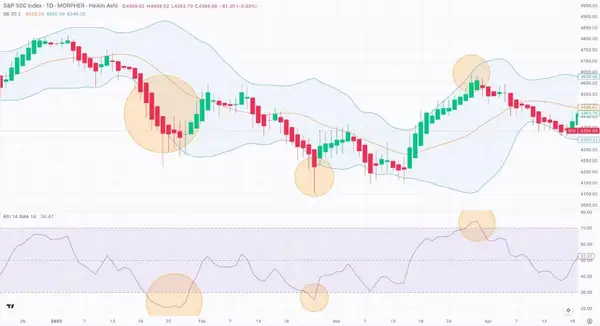
Here is a short example of trading the S&P 500 Index with technical analysis only. In this case, we utilize the Bollinger Bands and the RSI. As you can see, every time the candles are outside of the Bollinger bands and the RSI is outside the violet box, meaning below 30 or above 70, you would have had a successful trade.
Bollinger Bands can help gauge volatility and identify ‘overbought' or ‘oversold' conditions.
RSI: Values above 70 or below 30 often signal that an asset is overbought or oversold.
Technical Analysis of Indices is probably more for Day Trading or Swing Trading Strategies. For that, you can use a variety of indicators and charting techniques. Tools like Bollinger Bands, Relative Strength Index (RSI), and Moving Averages can be useful in identifying potential entry and exit points. Here are some other technical analysis tools to get you started:
Moving Averages: These smooth out price data to form a trend-following indicator.
Candlestick Patterns: Many traders use candlestick charts to identify reversal patterns that suggest an index could change direction.
In general, People use technical analysis for various reasons. It provides a structured way to analyze market data, offering quantifiable metrics to guide trading or investing decisions. The method is versatile and applicable to multiple asset classes, including stocks, commodities, and currencies. Furthermore, technical analysis can be used for multiple time frames, from intraday trading to long-term investment strategies.
Fundamental Analysis
Fundamental analysis is a financial evaluation method focusing on the intrinsic value of an asset. It examines economic indicators, financial statements, and industry conditions to estimate an asset's true worth. Unlike technical analysis, which concentrates on price and volume data, fundamental analysis delves into factors like revenue, earnings, and market position (narrative).
Investors and traders use this method to identify underpriced or overpriced assets. In the equity market, metrics such as price-to-earnings ratios, earnings per share, and dividend yields are often scrutinized. In the realm of fixed income, metrics like yield to maturity and credit ratings are key focal points.
The goal of fundamental analysis is to produce a quantitative valuation that can be compared to the asset's current market price. If the intrinsic value exceeds the market price, the asset is considered undervalued, and vice versa.
Fundamental Analysis is probably better for Long-Term Investment. For people who do not really want to engage in day-to-day trading, but still want to understand when would be a good moment to get in or out of the market. Also, do not forget that indices are different, and for each index, you would need a different analysis.
For the S&P 500, you might want to consider classic fundamental analysis tools like:
Economic Indicators: GDP growth, inflation rates, and employment data.
Corporate Earnings: Aggregate earnings expectations for companies in the S&P 500.
Interest Rates: Central bank policies can significantly impact index levels.
For other indices, various strategies may apply; here are some examples:
AI Index: Look at the rate of technological innovation, the amount of funding flowing into AI research, and broader economic trends that could influence AI adoption. A robust rate of innovation and increasing venture capital might make an AI index a “Long” buy.
Crypto Index: Regulatory news, mass adoption rates, and technological advancements like scalability solutions are key.
Biotech Index: Regulatory approvals, drug pipelines, and scientific breakthroughs in areas like gene editing can be indicative factors.
Each index has its own set of fundamentals that influence its performance. For example, regulatory changes and technological advancements would heavily influence a Crypto index. In contrast, an AI index might depend more on the technological innovation rate and research funding.
Day and Swing Trading
Now, let us dive a bit further into the timeframes. If you are rather thinking about trading on a shorter timescale, like days or weeks, Intraday Trading (Days) or Swing Trading (Weeks) might be your preferred strategies.
Intraday trading, sometimes called day trading, is the buying and selling of stocks or securities with an emphasis on earning immediate, short-term profits. Day traders try to exploit an index's volatility on the upside or the downside. These traders make their profits (or earn their losses) by trying to predict the index's short-term up or down price action.
An interesting strategy for Day-Traders might be to “Buy the Dip”, as, in the last two decades, the most profitable days were after a substantial decline. This is clearly shown in the chart below, where you can see that the returns are almost always positive the day after they declined.
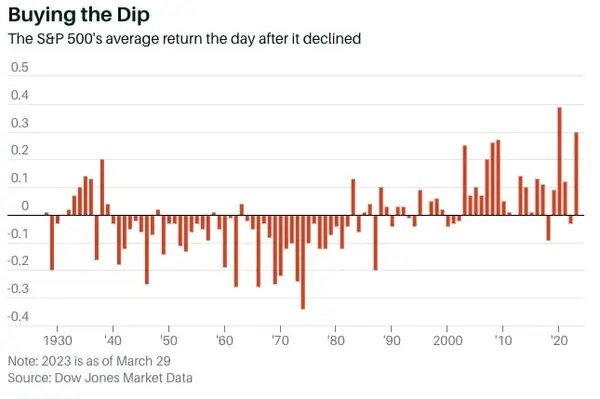
Swing trading is a hybrid strategy, not as short-term as intraday trading but shorter than long-term investments. Yet, swing traders typically earn higher profit margins by executing fewer transactions than their intraday counterparts. For example, we can take Mark Minervini, a world-renowned stock trader. He strongly advocates swing trading, where he holds positions for a few days or weeks and takes advantage of short-term price movements. Minervini's approach to swing trading is unique and based on his proprietary methods for selecting stocks with the greatest potential for big moves.
One of his most successful trades was in 1997 when he shorted an S&P 500 index fund during the Asian financial crisis. Minervini had identified a pattern of weakness in the market, and he believed that the crisis would spread to the United States. He took a large short position, and as the market tumbled, he made a fortune.
Minervini's trade is an excellent example of how swing trading can be highly profitable. By identifying trends and patterns in the market, he was able to make a bold move and profit from a short-term decline in the market. His success shows that swing trading is not just about buying low and selling high but about understanding the market and having the confidence to make bold moves.
Long-Term Index Investing
Before we start this section, we want to point out that an index's main idea is to buy and hold it for a very long time without trying to time the market or panic sell. There will always be reasons to sell, and some intraday and swing traders can predict these falls with excellent technical and fundamental analysis. However, most of the time and for most people, it is just easier to buy and hold the index, as seen in the “Reasons to Sell” Chart below.
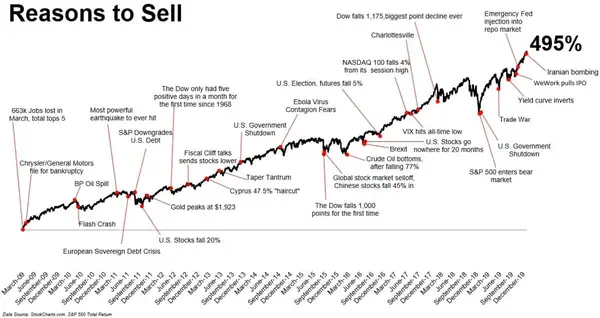
Perhaps even a better strategy would be to use a dollar-cost average or just buy in on days when the index drops. Selling the Index is often not the best strategy; J.P. Morgan has done some excellent analysis on this. J.P. Morgan's research highlights that the 10 best trading days in the past 20 years came after significant market declines, such as the 2008 financial crisis and the COVID-19 pullback in 2020.
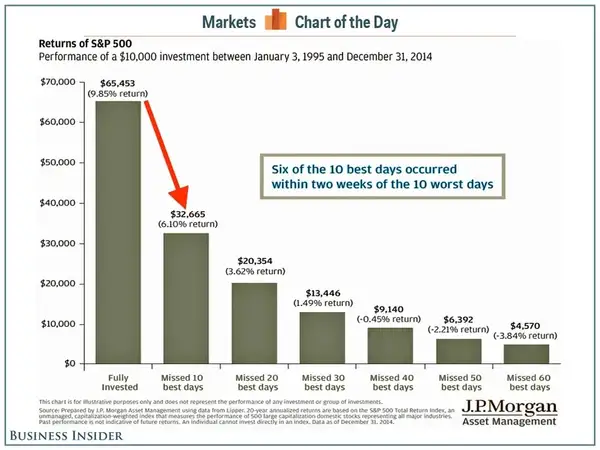
An investment of $10,000 in the S&P 500 from January 1, 2002, to December 31, 2021, would have grown to $61,685 if the investor remained in the market throughout this period. Also, missing the 10 best market days during this time would have drastically reduced the investment's value to $28,260.
Conclusion
While some investors relish the intellectual exercise of researching and picking individual stocks—a pursuit that offers continuous learning and deepens our understanding of various industries and the world at large—others may find the simplicity of index investing more to their taste. Index investing may not offer the thrill or engagement of individual stock picking, but it is a tried-and-true method for long-term investment success. This approach doesn't have to be mundane; by diversifying across multiple indices or applying leverage, you can introduce dynamism and excitement into your portfolio.
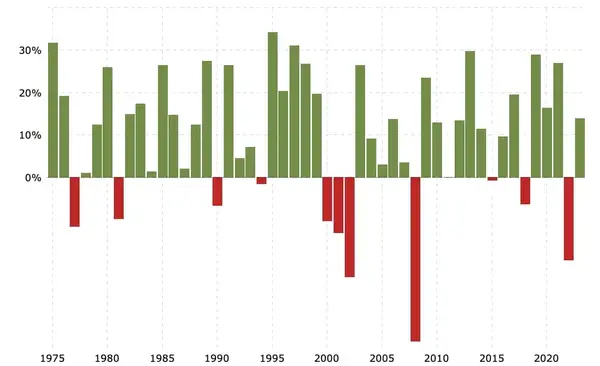
But at the end of the day, the main objective of participating in financial markets is not entertainment; it's to generate returns. Historically, a classic index strategy has consistently met this goal, as seen from this S&P 500 yearly return chart. Renowned investor John Templeton aptly noted:
“The best time to invest is when you have money. This is because history suggests it is not timing which matters; it is time.”
So whether you're an active trader or a passive investor, remember that time in the market often trumps timing the market. A disciplined, long-term approach to index investing has proven its worth time and again, at least until now.

Disclaimer: All investments involve risk, and the past performance of a security, industry, sector, market, financial product, trading strategy, or individual’s trading does not guarantee future results or returns. Investors are fully responsible for any investment decisions they make. Such decisions should be based solely on an evaluation of their financial circumstances, investment objectives, risk tolerance, and liquidity needs. This post does not constitute investment advice.

Painless trading for everyone
Hundreds of markets all in one place - Apple, Bitcoin, Gold, Watches, NFTs, Sneakers and so much more.

Painless trading for everyone
Hundreds of markets all in one place - Apple, Bitcoin, Gold, Watches, NFTs, Sneakers and so much more.

